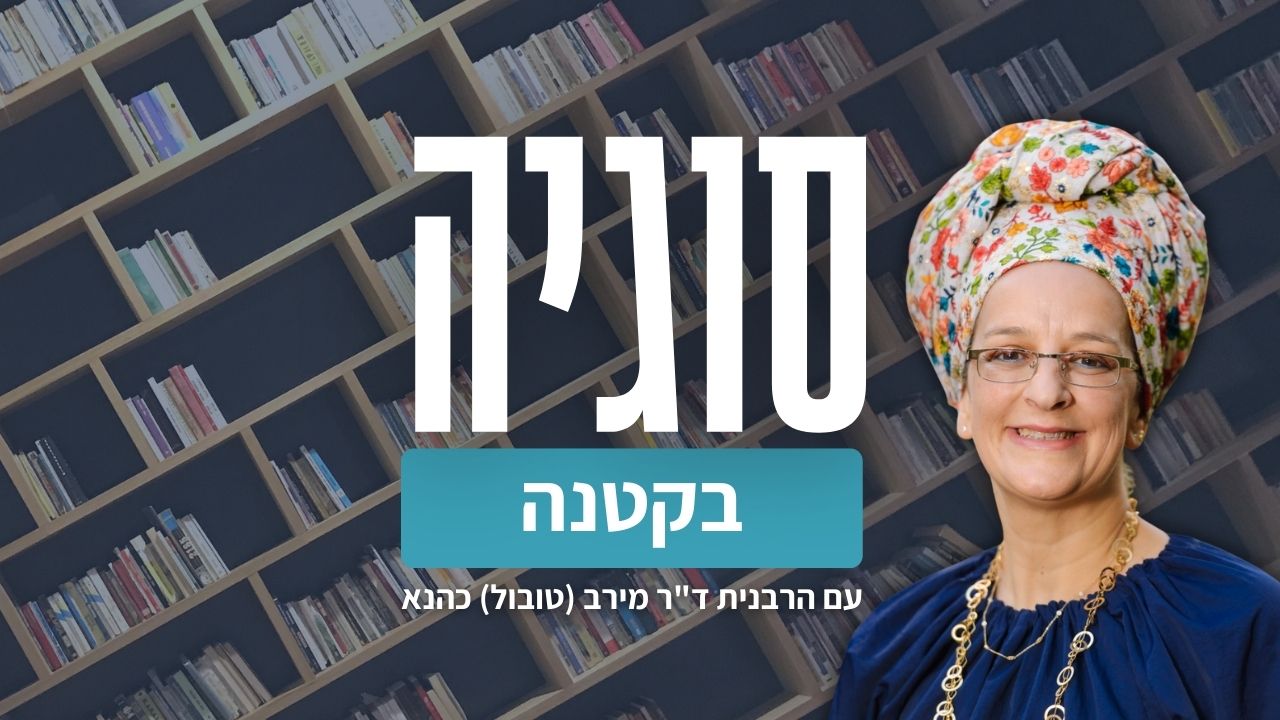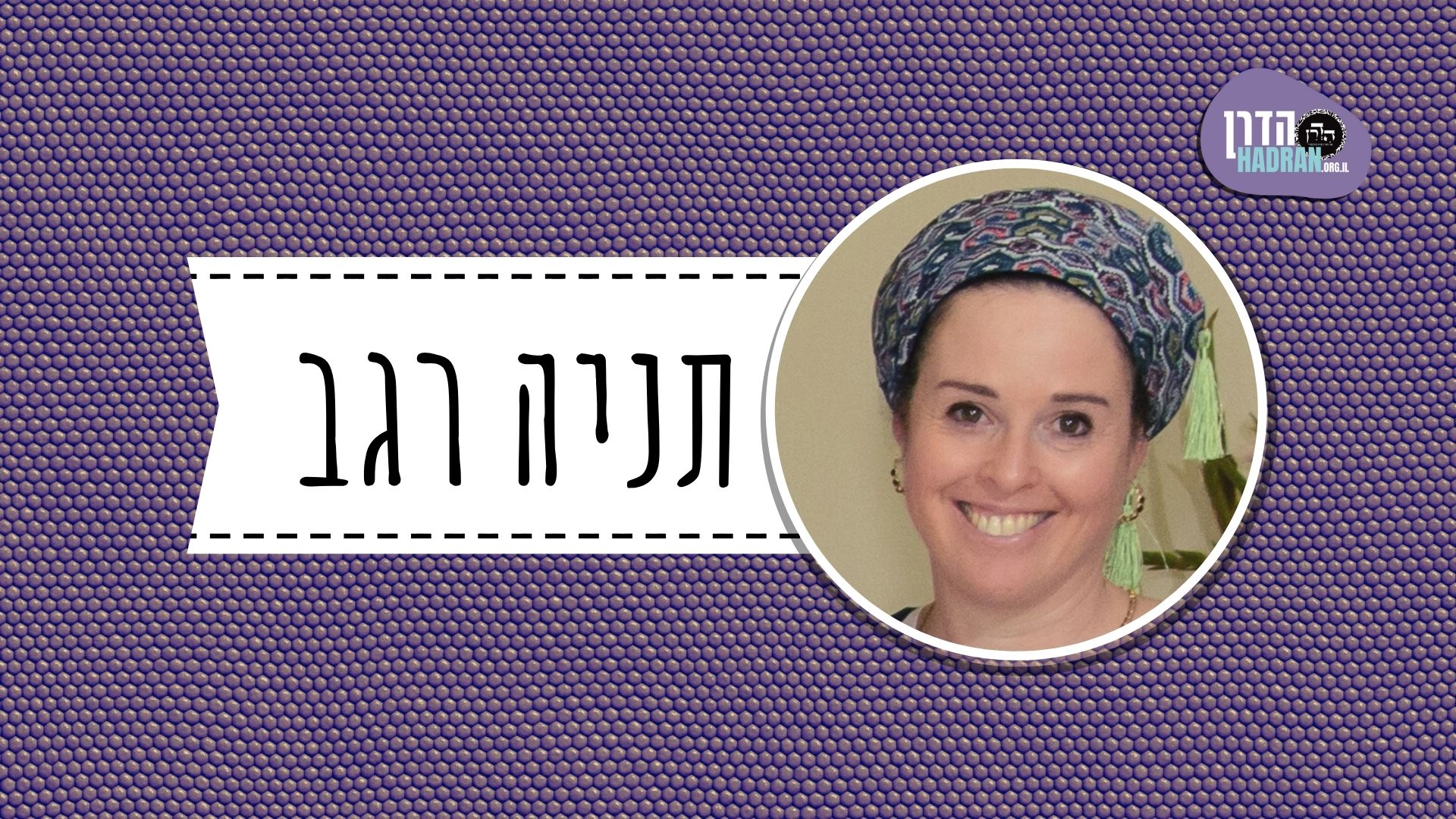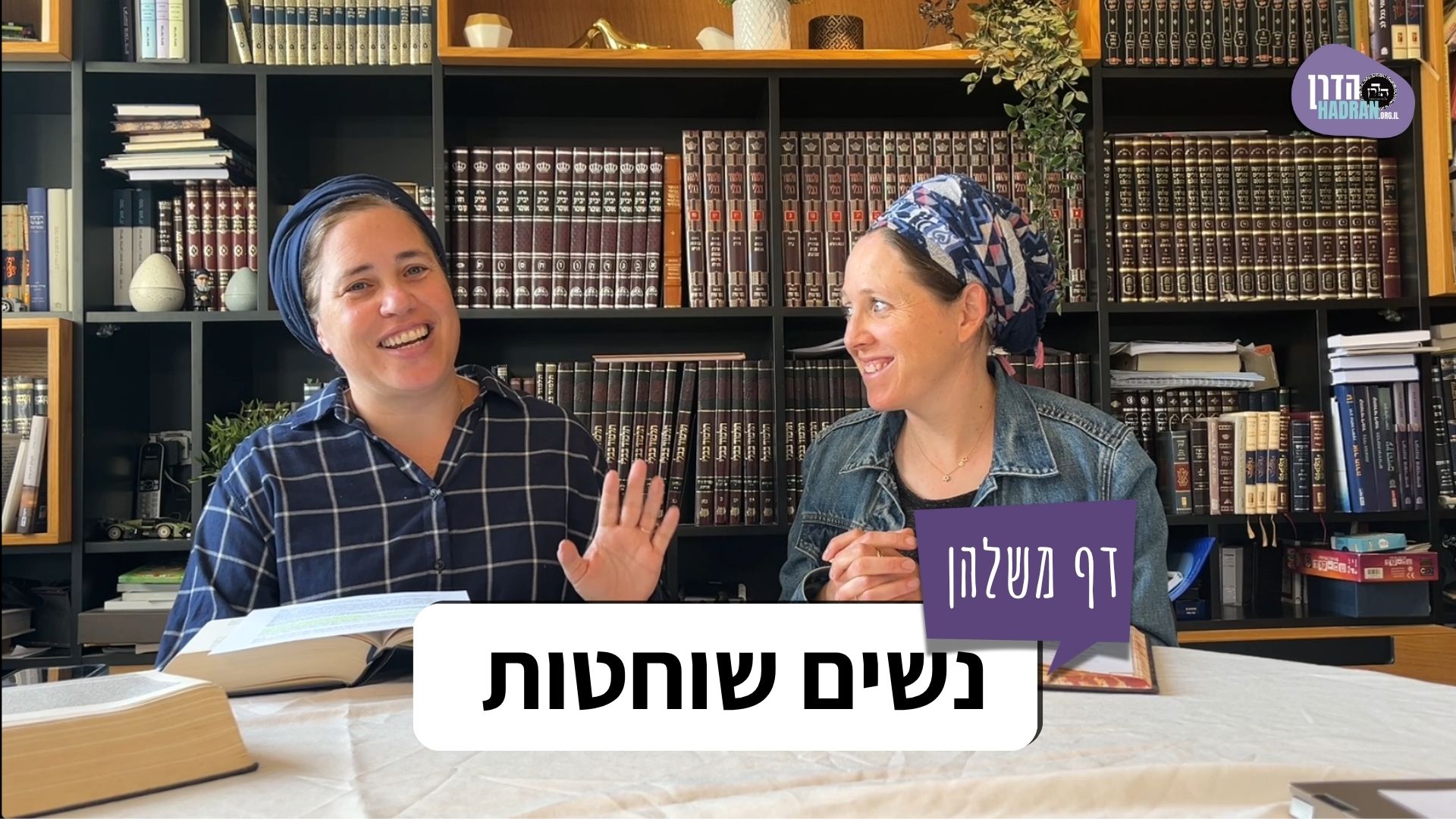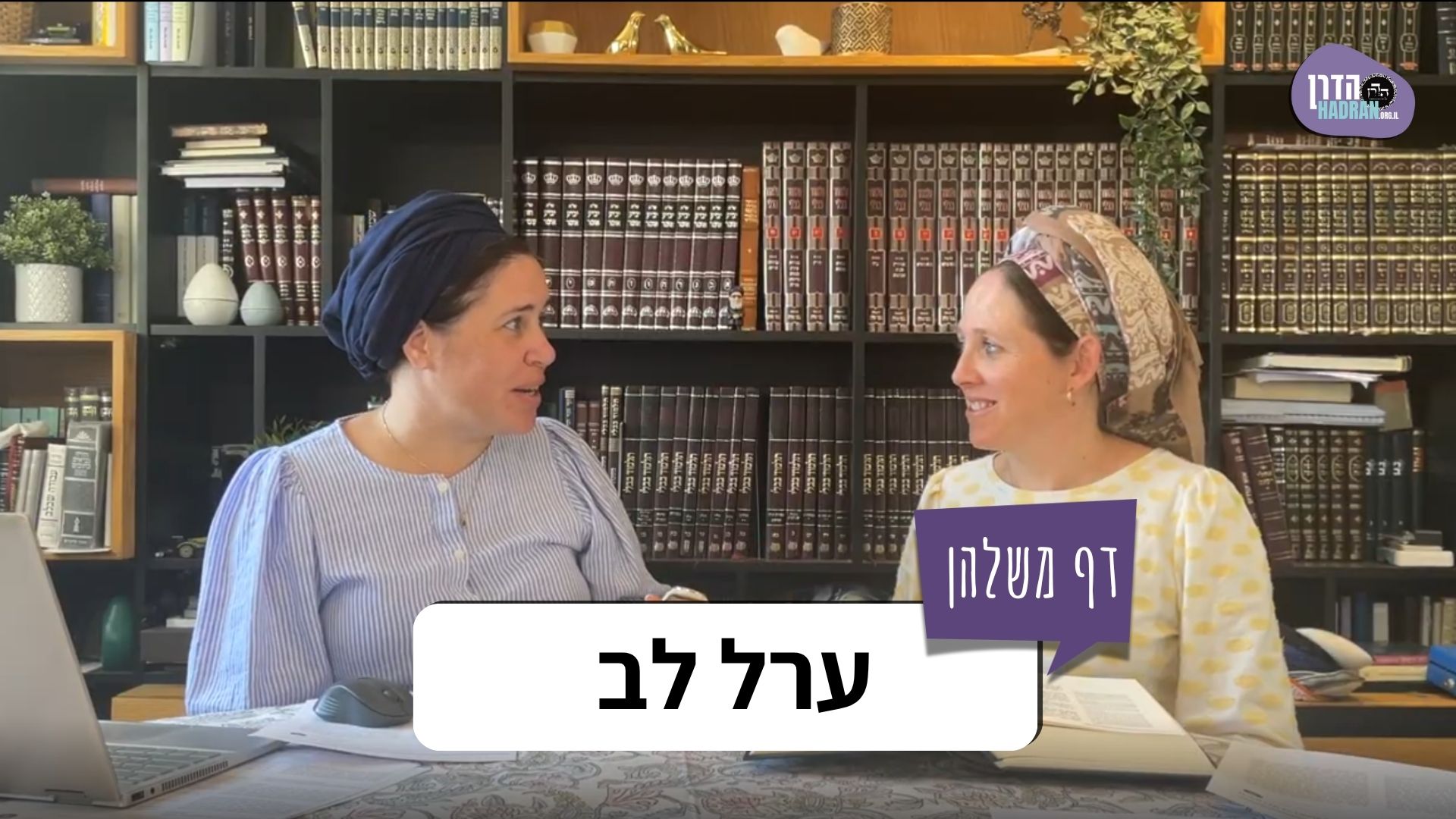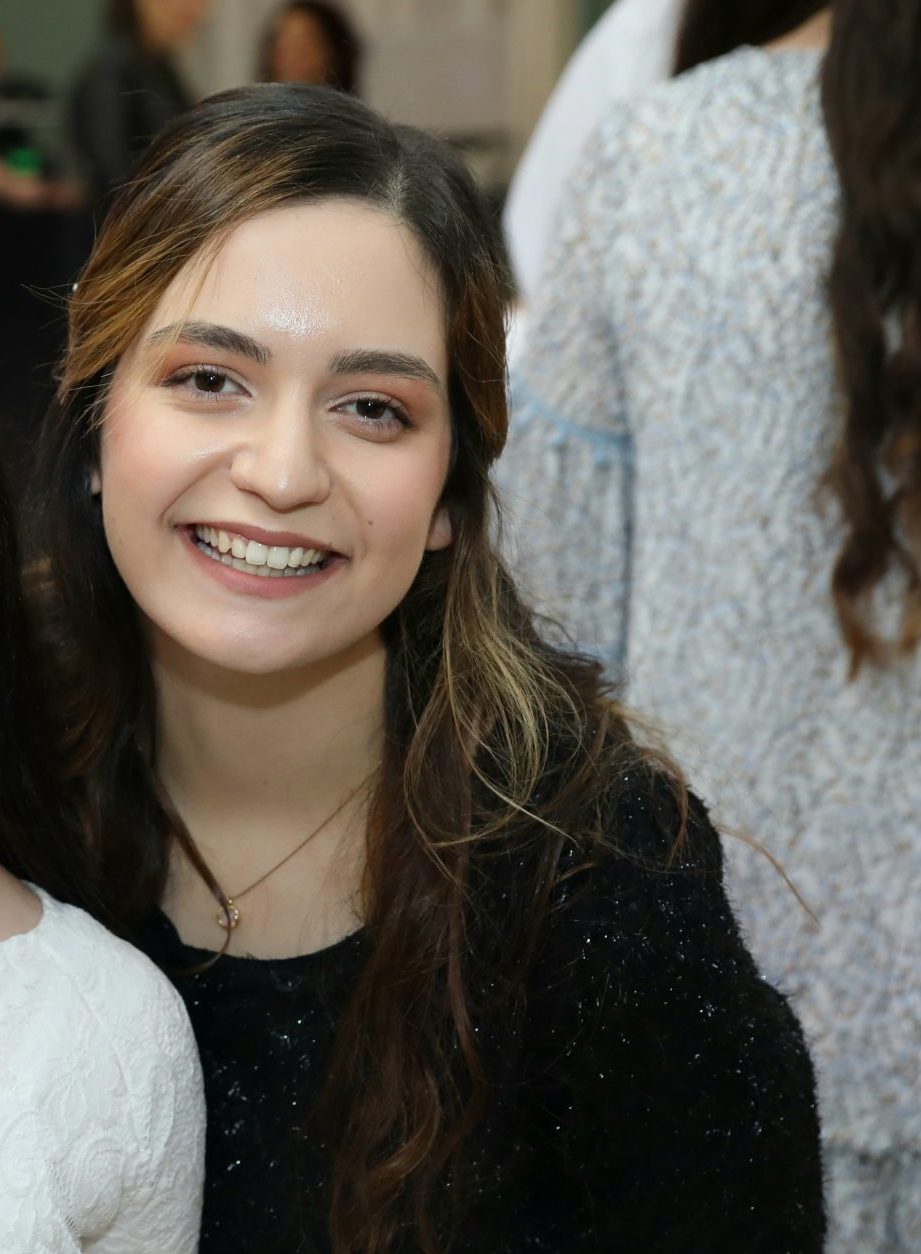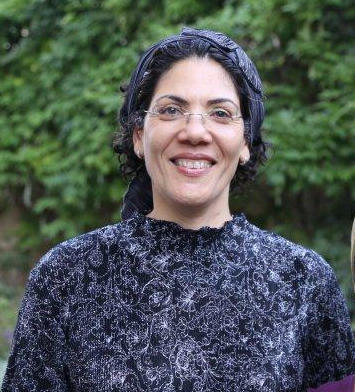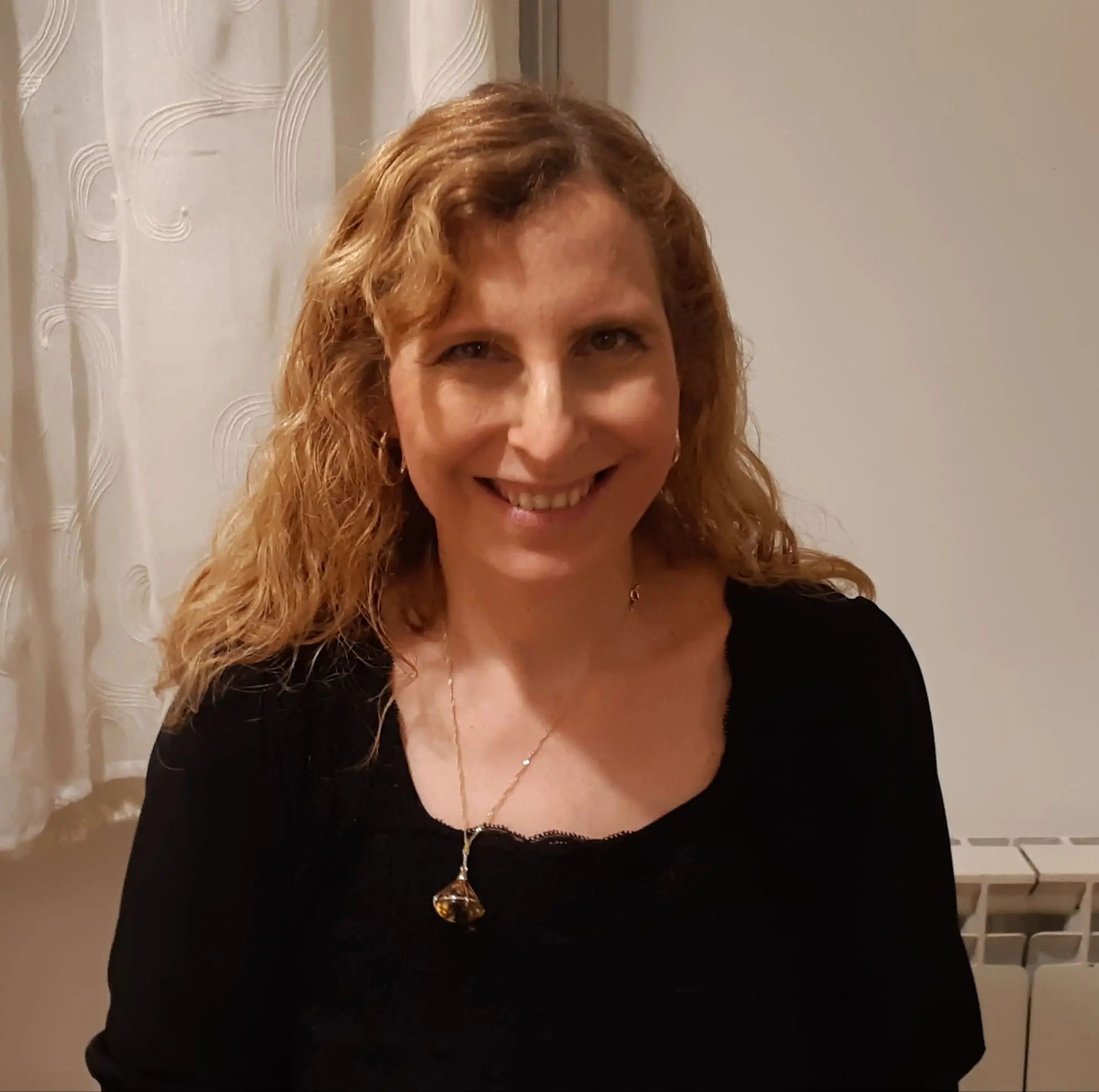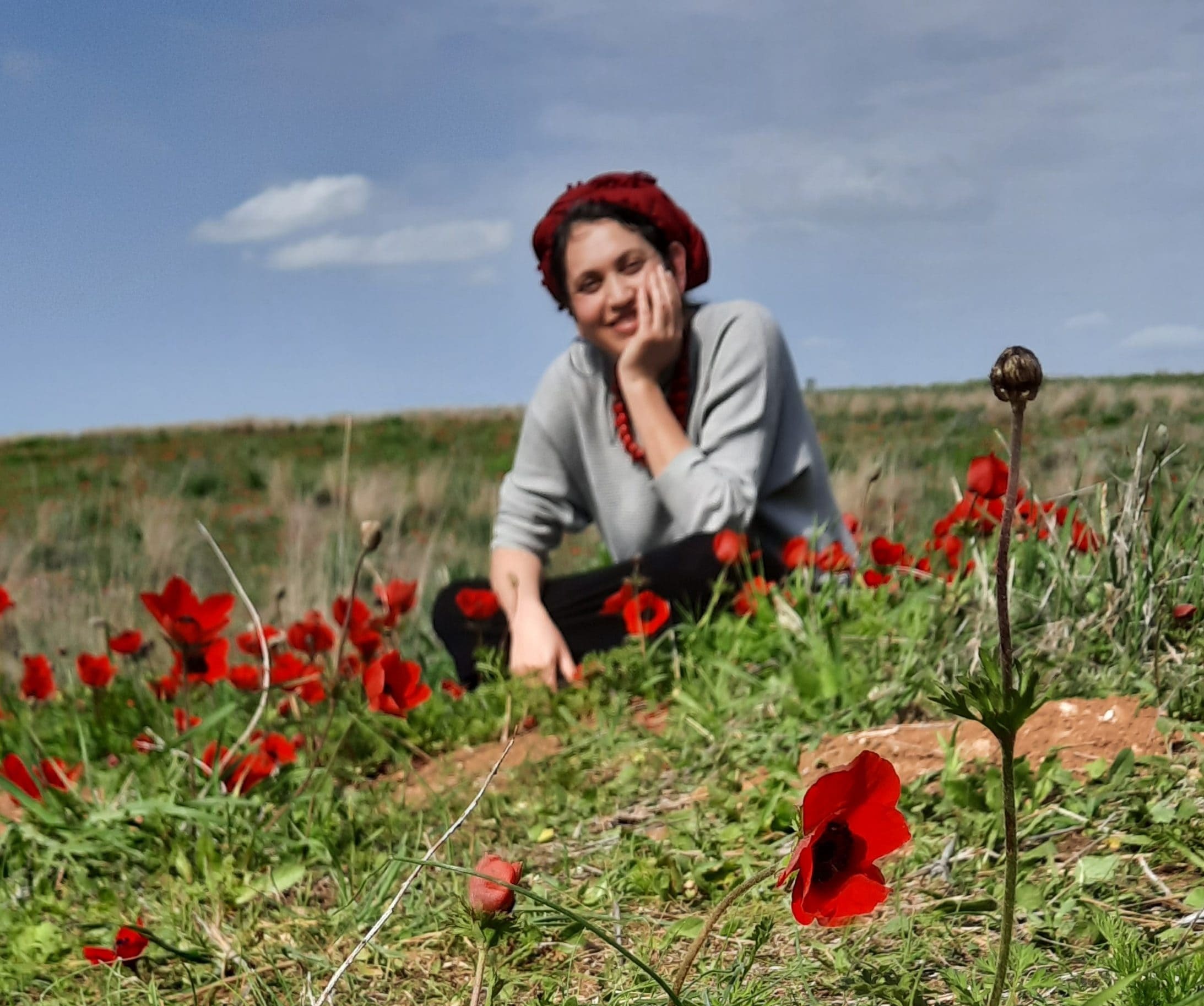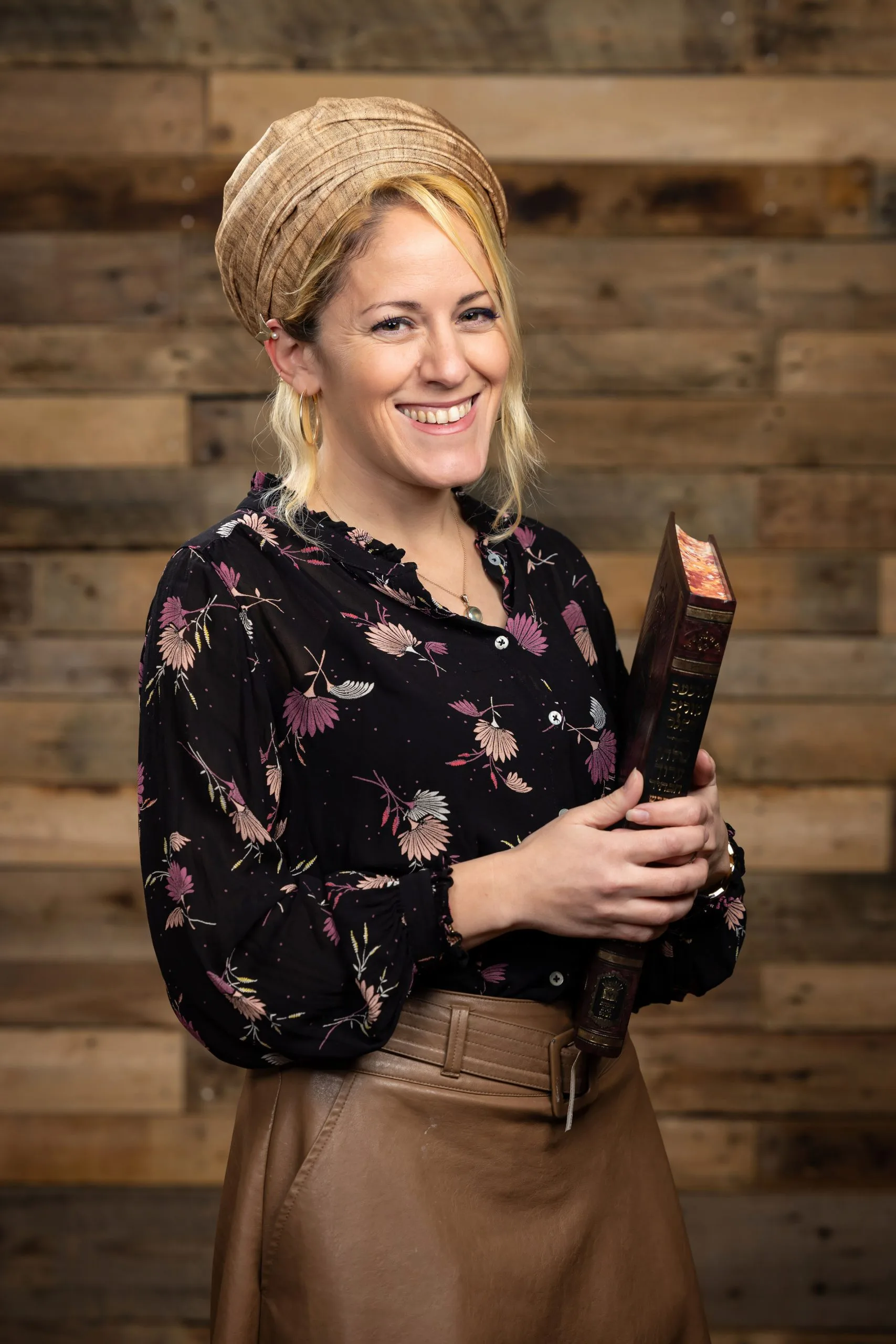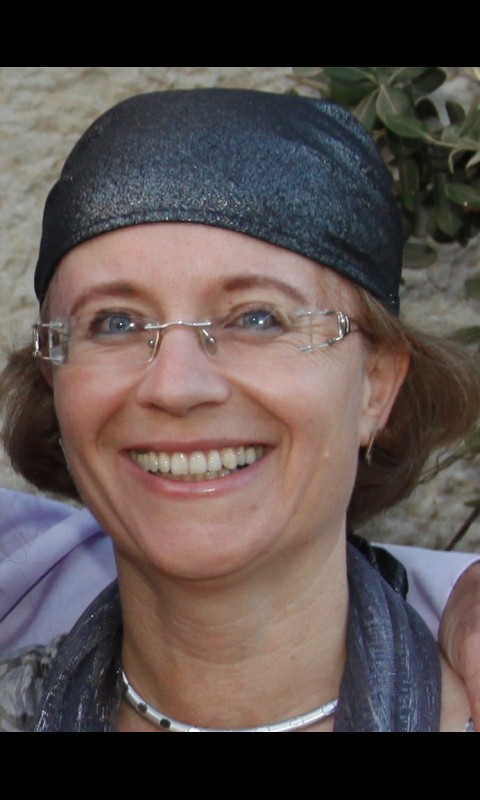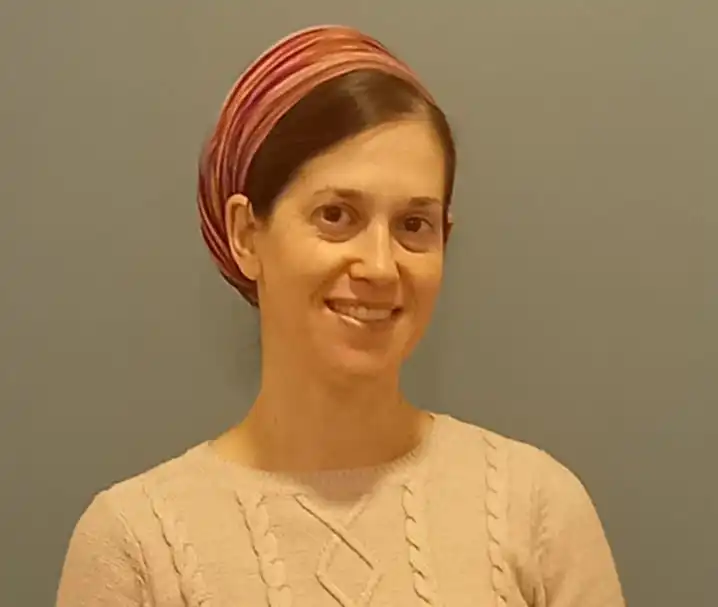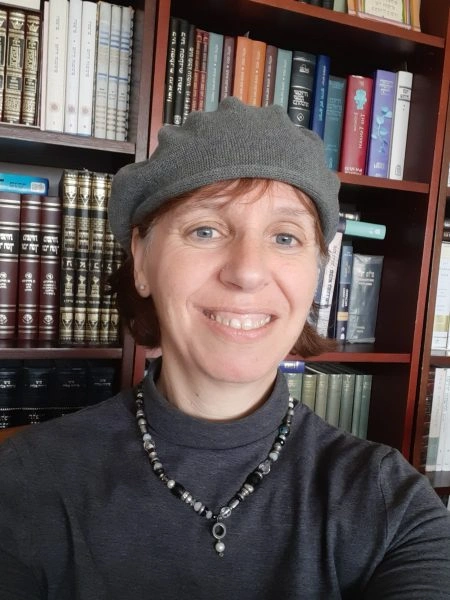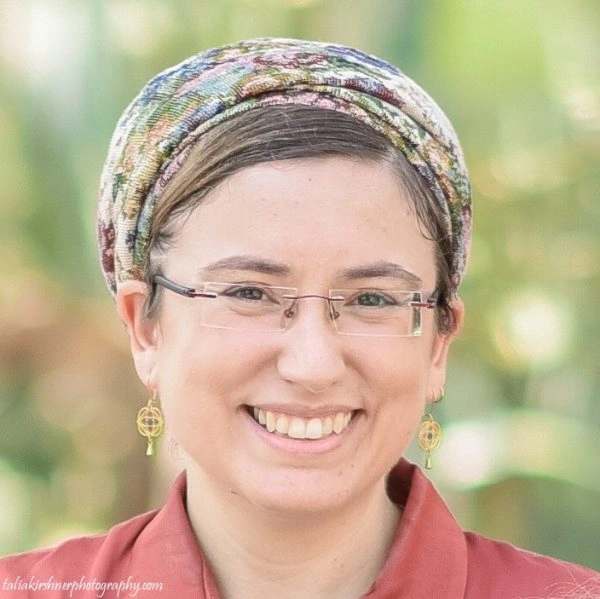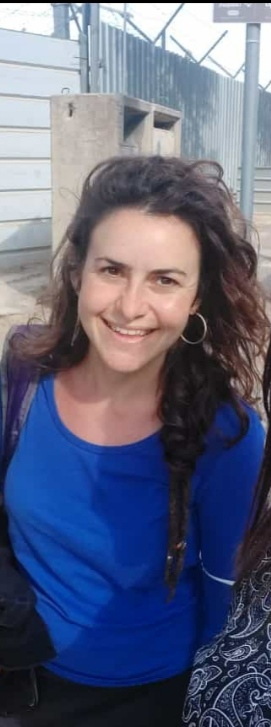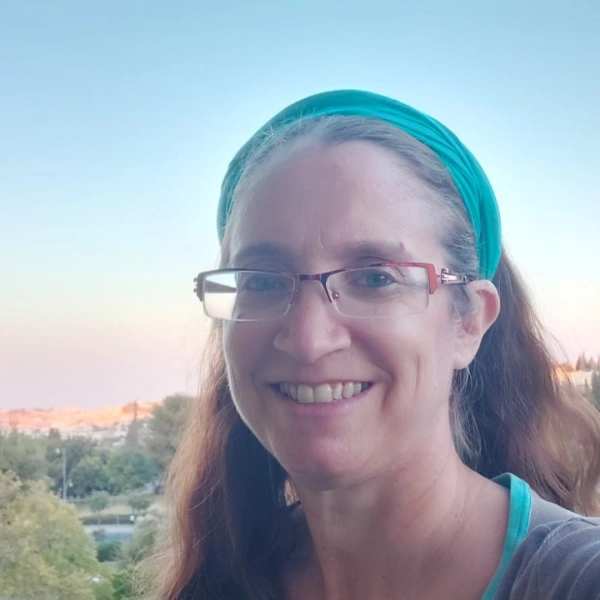מסכת זבחים
מסכת זבחים מוקדש ע”י אסתר קרמר לע”נ אביה מני גרוס.
הלימוד השבוע מוקדש ע”י אודרי מנדרו לע”נ יחזקאל בן רחל ואברהם.
רוצה להקדיש שיעור?

כלים
מסכת זבחים
מסכת זבחים מוקדש ע”י אסתר קרמר לע”נ אביה מני גרוס.
הלימוד השבוע מוקדש ע”י אודרי מנדרו לע”נ יחזקאל בן רחל ואברהם.
כלים
העמקה
רוצה להבין מה באמת קורה מתחת לפני השטח של הסוגיה?
שיעורים, פודקאסטים והרחבות של מיטב המורות שלנו יפתחו לך עוד זוויות וכיווני חשיבה.
חדשה בלימוד הגמרא?
זה הדף הראשון שלך? איזו התרגשות עצומה! יש לנו בדיוק את התכנים והכלים שיעזרו לך לעשות את הצעדים הראשונים ללמידה בקצב וברמה שלך, כך תוכלי להרגיש בנוח גם בתוך הסוגיות המורכבות ומאתגרות.
פסיפס הלומדות שלנו
גלי את קהילת הלומדות שלנו, מגוון נשים, רקעים וסיפורים. כולן חלק מתנועה ומסע מרגש ועוצמתי.
זבחים סז
אָמַר לוֹ רַבִּי אֱלִיעֶזֶר: וַהֲרֵי קׇדְשֵׁי קָדָשִׁים שֶׁשְּׁחָטָן בַּדָּרוֹם וּשְׁחָטָן לְשֵׁם קֳדָשִׁים קַלִּים יוֹכִיחוּ – שֶׁכֵּן שִׁינָּה אֶת שְׁמָם לְדָבָר שֶׁאֵין בּוֹ מְעִילָה, וּמוֹעֲלִין בָּהֶן; אַף אַתָּה אַל תִּתְמַהּ עַל הָעוֹלָה – אַף עַל פִּי שֶׁשִּׁינָּה שְׁמָהּ לְדָבָר שֶׁאֵין בּוֹ מְעִילָה, שֶׁיִּמְעֲלוּ בָּהּ!
Rabbi Eliezer said to him: The case of offerings of the most sacred order that one slaughtered in the south of the Temple courtyard and slaughtered for the sake of offerings of lesser sanctity, will prove that the fact that one changed the offering’s designation to an item that is not subject to the halakhot of misuse is not a relevant factor. As in this case, one changed their designation to an item that is not subject to the halakhot of misuse and, nevertheless, one is liable for misusing them. You too should not be puzzled about the burnt offering, concerning which even though one changed its designation to an item that is not subject to the halakhot of misuse, the halakha is that one would be liable for misusing it.
אָמַר לוֹ רַבִּי יְהוֹשֻׁעַ: לֹא; אִם אָמַרְתָּ בְּקׇדְשֵׁי קָדָשִׁים שֶׁשְּׁחָטָן בַּדָּרוֹם וּשְׁחָטָן לְשֵׁם קֳדָשִׁים קַלִּים – שֶׁכֵּן שִׁינָּה אֶת שְׁמָם לְדָבָר שֶׁיֵּשׁ בּוֹ אִיסּוּר וְהֶיתֵּר; תֹּאמַר בְּעוֹלָה – שֶׁשִּׁינָּה אֶת שְׁמָהּ לְדָבָר שֶׁכּוּלּוֹ הֶיתֵּר?!
Rabbi Yehoshua said to him: No, that is no proof, as if you said with regard to offerings of the most sacred order that one slaughtered in the south of the Temple courtyard, and slaughtered them for the sake of offerings of lesser sanctity, that one is liable for misusing them, that is reasonable. The reason is that one who slaughtered them changed their designation to an item for which there are both prohibited and permitted elements as offerings of lesser sanctity. Although one is not liable for misuse of their flesh, after the blood is sprinkled one is liable for misuse of the portions consumed on the altar. Would you say the halakha is the same in the case of a burnt offering for which one changed its designation to an item that is permitted in its entirety, i.e., a bird sin offering, which is eaten by the priests and none of it is burned on the altar?
גְּמָ׳ תַּנְיָא, אָמַר לוֹ רַבִּי אֱלִיעֶזֶר לְרַבִּי יְהוֹשֻׁעַ: אָשָׁם שֶׁשְּׁחָטוֹ בַּצָּפוֹן לְשֵׁם שְׁלָמִים יוֹכִיחַ – שֶׁשִּׁינָּה אֶת שְׁמוֹ, וּמוֹעֲלִין בּוֹ; וְאַף אַתָּה אַל תִּתְמַהּ עַל הָעוֹלָה – שֶׁאַף עַל פִּי שֶׁשִּׁינָּה אֶת שְׁמָהּ, שֶׁיִּמְעֲלוּ בָּהּ.
GEMARA: The discussion between Rabbi Eliezer and Rabbi Yehoshua is taught in a baraita, where it is recounted in greater detail: Rabbi Eliezer said to Rabbi Yehoshua: The case of a guilt offering that one slaughtered in the north of the Temple courtyard for the sake of a peace offering will prove my point, as here the one who performed the slaughter changed its designation to an item for which there is no liability for misuse, and yet one is liable for misusing it. And you too should not be puzzled about the bird burnt offering that was sacrificed as a sin offering, concerning which even though the one who performed the slaughter changed its designation to an item for which there is no liability for misuse, the halakha is that one is liable for misusing it.
אָמַר לוֹ רַבִּי יְהוֹשֻׁעַ: לֹא; אִם אָמַרְתָּ בְּאָשָׁם – שֶׁאִם שִׁינָּה אֶת שְׁמוֹ לֹא שִׁינָּה אֶת מְקוֹמוֹ; תֹּאמַר בְּעוֹלָה – שֶׁשִּׁינָּה אֶת שְׁמָהּ וְשִׁינָּה אֶת מְקוֹמָהּ?!
Rabbi Yehoshua said to him: No, if you say that this is the halakha with regard to a guilt offering sacrificed as a peace offering, as although the one who performed the slaughter changed its designation, he still did not change its location but sacrificed it in the north of the Temple courtyard, which is the appropriate location for both guilt offerings and peace offerings, shall you also say that this is the halakha with regard to a bird burnt offering sacrificed below the red line as a sin offering, where the one who performed the slaughter changed its designation and also changed its location?
אָמַר לוֹ רַבִּי אֱלִיעֶזֶר: אָשָׁם שֶׁשְּׁחָטוֹ בַּדָּרוֹם לְשֵׁם שְׁלָמִים יוֹכִיחַ – שֶׁשִּׁינָּה אֶת שְׁמוֹ וְשִׁינָּה אֶת מְקוֹמוֹ, וּמוֹעֲלִין בּוֹ; אַף אַתָּה אַל תִּתְמַהּ עַל הָעוֹלָה – שֶׁאַף עַל פִּי שֶׁשִּׁינָּה אֶת שְׁמָהּ וְשִׁינָּה אֶת מְקוֹמָהּ, מוֹעֲלִין בָּהּ.
Rabbi Eliezer said to him: A guilt offering that one slaughtered in the south of the Temple courtyard for the sake of a peace offering will prove my point, as here the one who performed the slaughter changed its designation and also changed its location, and yet one is liable for misusing it. You too should not be puzzled about the bird burnt offering that was sacrificed below the red line as a sin offering, concerning which even though the one who performed the slaughter changed its designation and also changed its location, the halakha is that one is liable for misusing it.
אָמַר לוֹ רַבִּי יְהוֹשֻׁעַ: לֹא; אִם אָמַרְתָּ בְּאָשָׁם – שֶׁשִּׁינָּה אֶת שְׁמוֹ וְשִׁינָּה אֶת מְקוֹמוֹ, וְלֹא שִׁינָּה אֶת מַעֲשָׂיו; תֹּאמַר בְּעוֹלָה – שֶׁשִּׁינָּה אֶת שְׁמָהּ וְאֶת מַעֲשֶׂיהָ, וְשִׁינָּה אֶת מְקוֹמָהּ?!
Rabbi Yehoshua said to him: No, if you say that this this is the halakha with regard to a guilt offering sacrificed as a peace offering, in which case the one who performed the slaughter changed its designation and changed its location, but he did not change its procedure, shall you also say that this is the halakha with regard to a bird burnt offering sacrificed entirely according to the procedure of a sin offering, in which case the one who performed the slaughter changed its designation and procedure and also changed its location?
אָמַר רָבָא, וְנֵימָא לֵיהּ: אָשָׁם שֶׁשְּׁחָטוֹ בַּדָּרוֹם לְשֵׁם שְׁלָמִים בְּשִׁינּוּי בְּעָלִים – שֶׁשִּׁינָּה אֶת שְׁמוֹ, וְשִׁינָּה אֶת מְקוֹמוֹ, וְשִׁינָּה אֶת מַעֲשָׂיו!
The baraita ends here, and it would appear that Rabbi Eliezer had no response to this claim. Rava said: Why? Let him say to Rabbi Yehoshua that a guilt offering that one slaughtered in the south of the Temple courtyard for the sake of a peace offering with a deviation with regard to the offering’s owner, i.e., he slaughtered it for the sake of someone other than the offering’s owner, will prove my opinion; as this is tantamount to a case where the one who performed the slaughter changed its designation and changed its location and also changed its procedure, yet one is liable for its misuse.
מִדְּלָא קָאָמַר לֵיהּ הָכִי, שְׁמַע מִינַּהּ: נְחֵית רַבִּי אֱלִיעֶזֶר לְטַעְמֵיהּ דְּרַבִּי יְהוֹשֻׁעַ – דְּאָמַר רַב אַדָּא בַּר אַהֲבָה, אוֹמֵר הָיָה רַבִּי יְהוֹשֻׁעַ: עוֹלַת הָעוֹף שֶׁעֲשָׂאָהּ לְמַטָּה כְּמַעֲשֵׂה חַטָּאת לְשֵׁם חַטָּאת – כֵּיוָן שֶׁמָּלַק בָּהּ סִימָן אֶחָד, נִמְשֶׁכֶת וְנַעֲשֵׂית חַטַּאת הָעוֹף.
Rava concluded: Since he did not say this to him, learn from it that at this stage Rabbi Eliezer grasped Rabbi Yehoshua’s line of reasoning; as Rav Adda bar Ahava says that Rabbi Yehoshua would say the following reasoning: In the case of a bird burnt offering that one sacrificed below the red line according to the procedure of a sin offering and for the sake of a sin offering, once he pinched one of the organs that must be severed in ritual slaughter [siman], i.e., either the gullet or the windpipe, the offering is removed from its status as a burnt offering and becomes a bird sin offering.
אִי הָכִי, חַטַּאת הָעוֹף נָמֵי – שֶׁעֲשָׂאָהּ לְמַעְלָה כְּמַעֲשֵׂה הָעוֹלָה; מִכִּי מָלֵיק בַּהּ סִימָן אֶחָד, תִּימָּשֵׁךְ וְתֶהֱוֵי עוֹלַת הָעוֹף! וְכִי תֵּימָא הָכִי נָמֵי, וְהָא אָמַר רַבִּי יוֹחָנָן מִשּׁוּם רַבִּי בְּנָאָה: כָּךְ הִיא הַצָּעָה שֶׁל מִשְׁנָה! מַאי, לָאו כָּךְ הִיא הַצָּעָה – וְתוּ לָא?
The Gemara challenges: If so, then in the case of a bird sin offering that one sacrificed above the red line according to the procedure of a burnt offering, too, as soon as he pinches one siman it should be removed from its status as a sin offering and become a bird burnt offering. And if you would say that indeed that is so, this is difficult: But doesn’t Rabbi Yoḥanan say in the name of Rabbi Bena’a that this is the accurate presentation of the mishna? What, does he not mean that this is the accurate presentation in the sense that Rabbi Yehoshua’s principle applies specifically to the case stated in the mishna, namely, that of a burnt offering sacrificed as a sin offering, and to nothing more?
לָא; כָּךְ הַצָּעָה שֶׁל כּוּלָּהּ מִשְׁנָה.
The Gemara answers: No, what Rabbi Bena’a means is that this is the accurate presentation of the entire mishna. Just as Rabbi Yehoshua disagrees with Rabbi Eliezer with regard to a bird burnt offering sacrificed entirely as a sin offering, he holds similarly that a bird sin offering sacrificed entirely as a burnt offering assumes the status of a burnt offering.
רַב אָשֵׁי אָמַר: בִּשְׁלָמָא עוֹלַת הָעוֹף שֶׁעֲשָׂאָהּ לְמַטָּה כְּמַעֲשֵׂה חַטָּאת לְשֵׁם חַטָּאת – כֵּיוָן דְּהָא הֶכְשֵׁירָהּ בְּסִימָן אֶחָד וְהָא הֶכְשֵׁירָהּ בִּשְׁנֵי סִימָנִין; וְעוֹלַת הָעוֹף לְמַטָּה לֵיתַהּ; כֵּיוָן דְּמָלַק בָּהּ סִימָן אֶחָד – נִמְשֶׁכֶת וְנַעֲשֵׂית חַטַּאת הָעוֹף.
Rav Ashi said: The two cases are different. Granted, Rabbi Yehoshua’s principle applies to a bird burnt offering that one sacrificed below the red line according to the procedure of a sin offering and for the sake of a sin offering. Since the method of preparing this bird sin offering is by pinching one siman, and the method of preparing that bird burnt offering is by pinching two simanim, and since there can be no bird burnt offering below the red line, therefore once he pinched one siman below the red line, the offering is removed from its status as a burnt offering and becomes a bird sin offering.
אֶלָּא חַטַּאת הָעוֹף, כֵּיוָן דְּאָמַר מָר: מְלִיקָה – בְּכׇל מָקוֹם כְּשֵׁירָה; מִכִּי מָלֵק בַּהּ סִימָן אֶחָד – אִיפַּסְלָא; כִּי הֲדַר מָלֵיק בְּאִידַּךְ סִימָן – הֵיכִי מִמַּשְׁכָה וְהָוְיָא עוֹלַת הָעוֹף?
But one cannot say this with regard to a bird sin offering that was sacrificed as a burnt offering. Since the Master said with regard to the bird sin offering: Pinching is valid everywhere on the altar, it follows that as soon as one pinched one siman for the sake of a burnt offering it was disqualified, like any other sin offering pinched for the sake of a different type of offering. Consequently, when he then pinched the other siman according to the procedure of a burnt offering, how could it then be removed from its status as a sin offering and become a bird burnt offering?
גּוּפָא – אָמַר רַב אַדָּא בַּר אַהֲבָה, אוֹמֵר הָיָה רַבִּי יְהוֹשֻׁעַ: עוֹלַת הָעוֹף שֶׁעֲשָׂאָהּ לְמַטָּה כְּמַעֲשֵׂה חַטָּאת לְשֵׁם חַטָּאת – כֵּיוָן שֶׁמָּלַק בָּהּ סִימָן אֶחָד, נִמְשֶׁכֶת וְנַעֲשֵׂית חַטַּאת הָעוֹף.
§ The Gemara discusses the matter itself, that Rav Adda bar Ahava says that Rabbi Yehoshua would say: In the case of a bird burnt offering that one sacrificed below the red line according to the procedure of a sin offering and for the sake of a sin offering, once he pinched one siman, the offering is removed from its status as a burnt offering and becomes a bird sin offering.
תָּא שְׁמַע: חַטָּאת לָזוֹ וְעוֹלָה לָזוֹ;
The Gemara suggests: Come and hear a challenge to this principle from a mishna in tractate Kinnim (24a). A woman after childbirth must bring two bird offerings: A burnt offering and a sin offering. The mishna discusses a case where two women after childbirth, one of whom already brought her burnt offering and one of whom already brought her sin offering, bring their remaining offerings to the Temple, a sin offering for this one and a burnt offering for that one, but confusion has arisen as to which bird is which.
עָשָׂה שְׁתֵּיהֶן לְמַעְלָה – מֶחֱצָה כָּשֵׁר וּמֶחֱצָה פָּסוּל. שְׁתֵּיהֶן לְמַטָּה – מֶחֱצָה כָּשֵׁר וּמֶחֱצָה פָּסוּל. אַחַת לְמַעְלָה וְאַחַת לְמַטָּה – שְׁתֵּיהֶן פְּסוּלוֹת; שֶׁאֲנִי אוֹמֵר: חַטָּאת קְרֵבָה לְמַעְלָה, וְעוֹלָה קְרֵבָה לְמַטָּה.
If the priest sacrificed both of them above the red line, half of the birds, i.e., one of them, is fit, as in any event the burnt offering has been sacrificed properly, and half of the birds, i.e., the other one, is disqualified. Likewise, if he sacrificed both of them below the red line, half are fit, as in any event the sin offering was sacrificed properly, and half are disqualified. If he sacrificed one above the red line and one below, they are both disqualified, as I say that perhaps the sin offering was sacrificed above, and the burnt offering was sacrificed below.
נְהִי נָמֵי דְּעוֹלָה קְרֵבָה לְמַטָּה, תִּימְשׁוֹךְ וְתֶהֱוֵי חַטַּאת הָעוֹף!
But according to Rav Adda bar Ahava’s explanation of Rabbi Yehoshua’s principle, the sin offering should be deemed fit in any event; even though the burnt offering was indeed sacrificed below the red line, it should be removed from its status as a burnt offering and become a bird sin offering.
אֵימוֹר דְּאָמַר רַבִּי יְהוֹשֻׁעַ – בְּחַד גַּבְרָא; בִּתְרֵי גַבְרֵי מִי אָמַר?!
The Gemara rejects this claim: It is reasonable to say that Rabbi Yehoshua stated his principle with regard to one person, whose offering the priest sacrificed below the red line instead of above it; but did he state it with regard to two people, one of whose offering the priest sacrificed for the sake of the other person? In the case of the two women, the priest sacrificed the offering for the sake of a different person altogether, and Rabbi Yehoshua would concede that such an offering does not become a sin offering.
תָּא שְׁמַע: חַטָּאת וְעוֹלָה, וּסְתוּמָה, וּמְפוֹרֶשֶׁת –
The Gemara suggests: Come and hear another challenge from a mishna in tractate Kinnim (24a). The mishna discusses a case of two women who jointly brought three pairs of birds, as follows: The birds of one pair were designated as a sin offering and a burnt offering respectively, but it was not specified which woman’s obligation they were to satisfy; and the second pair was unspecified as to which bird was to be which offering; and the third pair was specified as to both the type of offering of each bird and whose obligation each bird was to satisfy.
עָשָׂה כּוּלָּן לְמַעְלָה – מֶחֱצָה כָּשֵׁר וּמֶחֱצָה פָּסוּל. כּוּלָּן לְמַטָּה – מֶחֱצָה כָּשֵׁר וּמֶחֱצָה פָּסוּל. חֶצְיָין לְמַעְלָה וְחֶצְיָין לְמַטָּה – אֵינָהּ כְּשֵׁירָה אֶלָּא סְתוּמָה, וּמִתְחַלֶּקֶת בֵּינֵיהֶן.
If the priest sacrificed all of them above the red line, half of the birds are fit, as in any event the burnt offerings have been sacrificed properly, and half are disqualified. Likewise, if he sacrificed all of them below the red line, half are fit, as in any event the sin offerings were sacrificed properly, and half are disqualified. If he sacrificed half of every pair above the red line and half of it below, but it is unclear which bird he sacrificed above and which he sacrificed below, only the unspecified pair is fit, as by sacrificing one above and one below the priest has in effect designated them. And since the women brought the birds jointly, the fit pair is divided between them, one bird counting toward the obligation of each woman.
וְאִילּוּ מְפוֹרָשִׁין – לָא; וְאַמַּאי? נְהִי נָמֵי דְּעוֹלָה קְרֵבָה לְמַטָּה, תִּימְשׁוֹךְ וְתִיהְוֵי חַטַּאת הָעוֹף!
The mishna teaches that only the unspecified pair is fit, while the specified birds are not, as perhaps each bird was sacrificed on the wrong side of the red line and disqualified. But why should that be the halakha? According to Rav Adda bar Ahava’s explanation of Rabbi Yehoshua’s principle, even if the burnt offering was indeed sacrificed below the red line, it should be removed from its status as a burnt offering and become a bird sin offering.
וְכִי תֵּימָא הָא דְּלָא כְּרַבִּי יְהוֹשֻׁעַ – וּמִי מָצֵית אָמְרַתְּ הָכִי?!
And if you would say that this mishna is not in accordance with the opinion of Rabbi Yehoshua, how can you say that?
תָּא שְׁמַע, הָאִשָּׁה שֶׁאָמְרָה: ״הֲרֵי עָלַי קֵן אִם אֵלֵד זָכָר״; יָלְדָה זָכָר – מְבִיאָה שְׁתֵּי קִינִּים, אַחַת לְנִדְרָהּ וְאַחַת לְחוֹבָתָהּ.
The Gemara explains: Come and hear evidence that the mishnayot in tractate Kinnim are in accordance with the opinion of Rabbi Yehoshua from another mishna in the same chapter (24b): The mishna discusses the case of a woman who said: It is incumbent upon me to bring one nest, i.e., one pair of bird offerings, if I give birth to a male child. Since all women who give birth must bring one pair of birds in any event, if she ultimately gave birth to a male, she must bring two nests, one for her vow and one for her obligation.
נְתָנָתַן לַכֹּהֵן – הַכֹּהֵן צָרִיךְ לַעֲשׂוֹתָן שָׁלֹשׁ לְמַעְלָה וְאַחַת לְמַטָּה.
If she gave them to the priest without specifying which bird is to be which type of offering, the priest must sacrifice three above the red line and one below. This is because the obligatory pair must consist of a burnt offering and a sin offering, while a pair of birds brought to fulfill a vow must consist of two burnt offerings.
לֹא עָשָׂה כֵּן, אֶלָּא עָשָׂה שְׁתַּיִם לְמַעְלָה וּשְׁתַּיִם לְמַטָּה, וְלֹא נִמְלַךְ – צְרִיכָה שֶׁתָּבִיא עוֹד פְּרֵידָה אַחַת, וְתַקְרִיבֶנָּה לְמַעְלָה.
If the priest did not do so, but rather, thinking that both pairs were obligatory, sacrificed two above and two below, and he did not consult the woman before sacrificing them, she must bring one more bird [perida] and sacrifice it above the red line to satisfy her remaining obligation.
מִמִּין אֶחָד. וּמִשְּׁנֵי מִינִין – תָּבִיא שְׁתַּיִם.
This is the halakha only if both pairs were of the same species of bird, either doves or pigeons; but if the two pairs were of two different species, and the priest does not remember which pair he sacrificed first, she must bring two more birds, one of each species. Whichever pair was sacrificed first is deemed the obligatory pair, and the woman must bring a bird of the other species to satisfy her remaining obligation of a burnt offering. But since it is not known which species of bird that is, she must bring one of each.
פֵּרְשָׁה נִדְרָהּ – [צְרִיכָה] לְהָבִיא עוֹד שָׁלֹשׁ פְּרֵידִין.
If the woman initially specified which species of bird she would bring for her vow but subsequently forgot what species she specified, and she then brought two pairs of a single species, and the priest mistakenly sacrificed two birds above the red line and two below, then she must bring three more birds, all as burnt offerings. One must be of the species she brought, to replace the bird mistakenly sacrificed below, and the other two must be of the other species, in case that was the species she specified in the first place.
מִמִּין אֶחָד. וּמִשְּׁנֵי מִינִין – תָּבִיא אַרְבַּע.
This is the halakha only if both pairs that she brought were of the same species. But if they were of two different species, and the priest does not remember which pair he sacrificed first, she must bring four, two of each species. This is because no matter which species she specified, the priest may have sacrificed the pair of that species first, leaving none of that species to satisfy even part of her vow. She therefore may still need to satisfy an entire vow of either species.
קָבְעָה נִדְרָהּ –
The mishna continues: If, besides forgetting which species of bird she specified to bring for her vow, the woman also committed to sacrificing the birds of her vow together with the burnt offering of the obligatory pair, but the priest mistakenly sacrificed two birds above the red line and two below,
